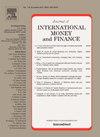The intersection of security attributes of national debt and socially responsible investment objectives
IF 2.8
2区 经济学
Q2 BUSINESS, FINANCE
引用次数: 0
Abstract
Amidst the backdrop of globalization, the deepening economic interdependence among nations is unmistakable. The government bond market, a crucial element of the financial system, carries profound implications for socially responsible investments (SRI) owing to its stability and security. Focusing on the spillover of government bond yields, this study employs the QVAR model’s generalized variance decomposition method to assess the spillover effects of long-term and short-term government bond yields under different extreme states. The terms “spillover” and “spillback” are respectively used to denote of the government bond market, thereby assessing the safety attributes of government bond assets. Additionally, a panel model is constructed to examine whether economic interconnectedness is a primary factor in the risk resistance and transfer capability of the government bond market. The results indicate that, first, under extreme states, the capacity to resist the risk of the government bond market is weaker than in normal states, In comparison, the capacity to transfer risk is stronger, reflecting structural changes in the security attributes of government bond assets. Secondly, considering the resilience of government bonds to risk, both short-term and long-term government bonds in various nations demonstrate enhanced safety attributes under high-risk circumstances compared to low-risk scenarios. Regarding their capacity to transfer risk, the safety attributes of short-term government bonds tend to vary, whereas long-term government bonds exhibit more robust safety features under low-risk conditions. Third, the level of economic correlation serves as a prospective indicator for identifying the safety attributes of the government bond market, exerting a significant influence on both the capacity to resist risk and the capacity to transfer risk of the government bond market. Each economy should persistently deepen its comprehension of economic interconnections within the context of globalization, augment the safety and allure of government bond assets, and perpetually refine investment portfolios to bolster their risk resilience and transfer. This will attract more socially responsible investors, thereby providing financial support and risk mitigation for sustainable development.
国债的安全属性与社会责任投资目标的交集
在全球化背景下,各国经济相互依存的加深是不容置疑的。政府债券市场是金融体系的重要组成部分,由于其稳定性和安全性,对社会责任投资(SRI)具有深远的影响。本文以政府债券收益率的溢出效应为研究对象,采用QVAR模型的广义方差分解方法,对不同极端状态下的长期和短期政府债券收益率的溢出效应进行了评估。分别用“溢出”和“溢出”来表示政府债券市场,从而评估政府债券资产的安全属性。此外,本文还构建了一个面板模型来检验经济关联度是否是影响政府债券市场风险抵抗能力和转移能力的主要因素。结果表明:一是极端状态下,国债市场的抗风险能力弱于正常状态,而风险转移能力强,反映了国债资产安全属性的结构性变化。其次,考虑到政府债券对风险的弹性,与低风险情景相比,各国短期和长期政府债券在高风险情景下都表现出更高的安全属性。就风险转移能力而言,短期政府债券的安全属性往往存在差异,而长期政府债券在低风险条件下表现出更为稳健的安全特征。第三,经济关联度水平是识别国债市场安全属性的前瞻性指标,对国债市场的抗风险能力和风险转移能力都有显著影响。每个经济体都应不断加深对全球化背景下经济相互联系的理解,增强政府债券资产的安全性和吸引力,并不断完善投资组合,以增强其风险抵御能力和转移能力。这将吸引更多对社会负责的投资者,从而为可持续发展提供财政支持和减轻风险。
本文章由计算机程序翻译,如有差异,请以英文原文为准。
求助全文
约1分钟内获得全文
求助全文
来源期刊

Journal of International Money and Finance
BUSINESS, FINANCE-
CiteScore
4.20
自引率
4.00%
发文量
141
期刊介绍:
Since its launch in 1982, Journal of International Money and Finance has built up a solid reputation as a high quality scholarly journal devoted to theoretical and empirical research in the fields of international monetary economics, international finance, and the rapidly developing overlap area between the two. Researchers in these areas, and financial market professionals too, pay attention to the articles that the journal publishes. Authors published in the journal are in the forefront of scholarly research on exchange rate behaviour, foreign exchange options, international capital markets, international monetary and fiscal policy, international transmission and related questions.
 求助内容:
求助内容: 应助结果提醒方式:
应助结果提醒方式:


